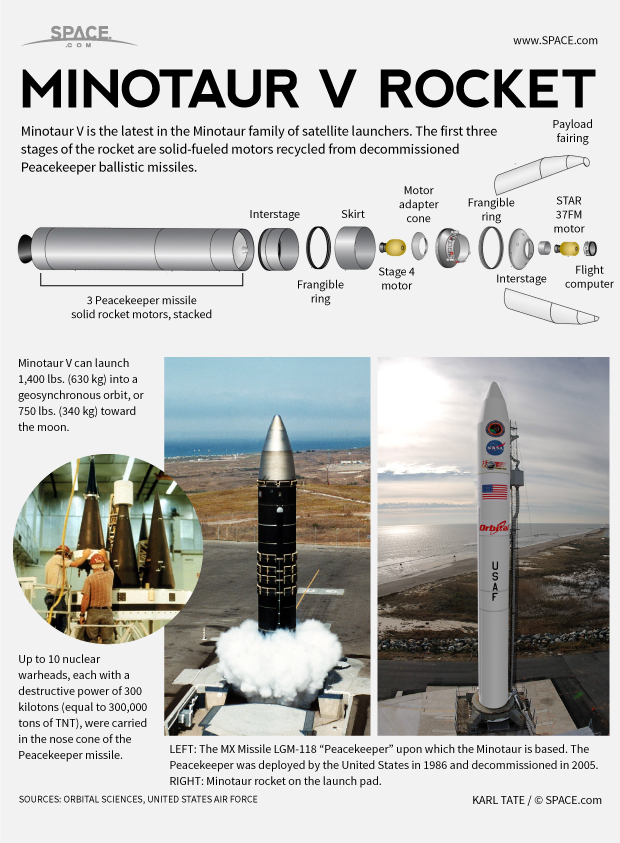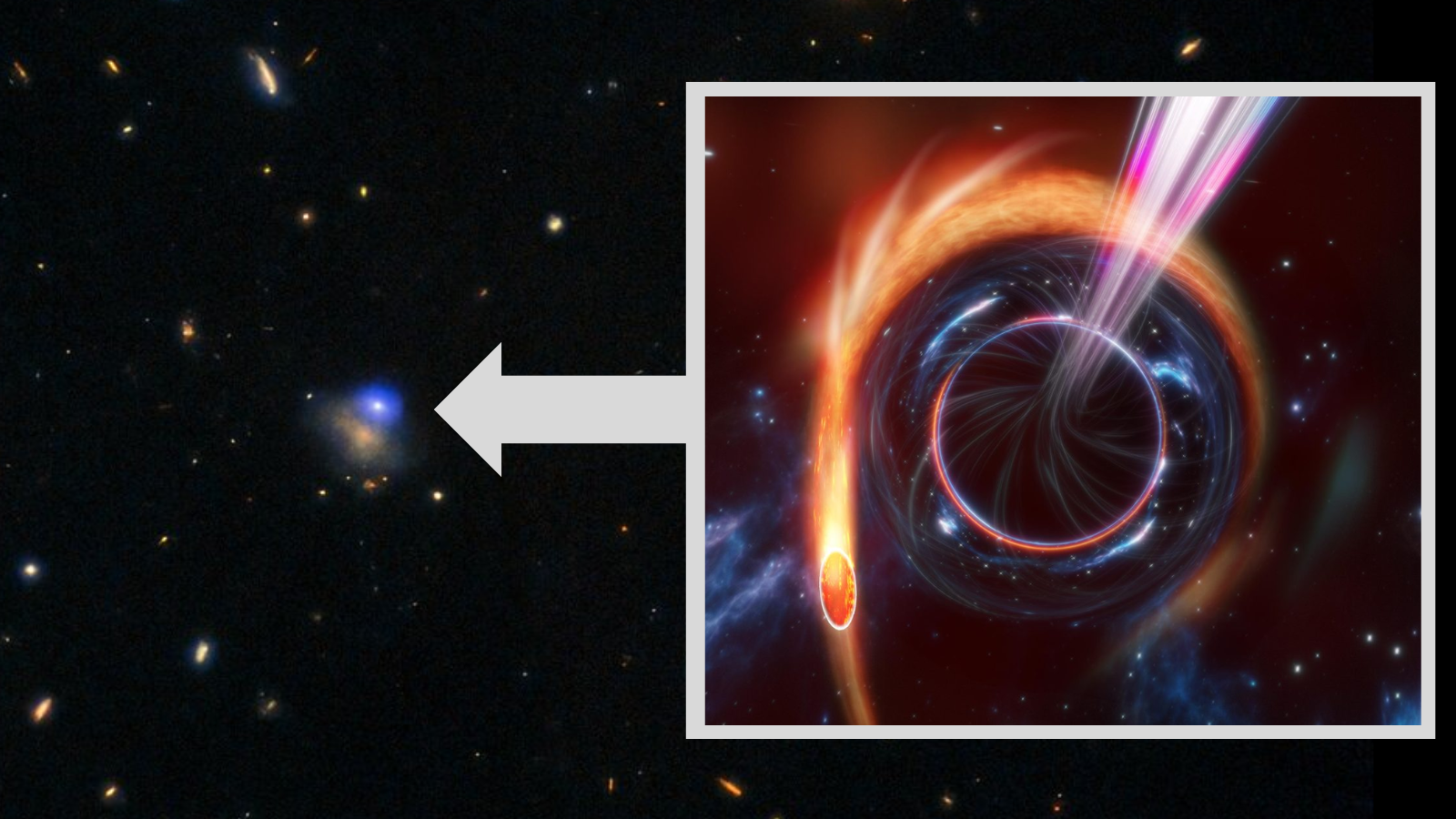How the Minotaur V Rocket Works (Infographic)

The Minotaur V rocket is the latest member of the Minotaur family of satellite launch vehicles designed and built by the Dulles, Va.-based company Orbital Sciences Corp. The first three stages of the five-stage Minotaur V rocket are solid-fueled motors recycled from Peacekeeper ballistic missiles.
Photos of Orbital Sciences' New Minotaur V Rocket
When fully assembled, the Minotaur V is capable of launching small satellites on high-energy trajectories, including geosynchronous transfer orbits and trans-lunar trips. The rocket stands 80 feet (24 meters) tall and is about 7.6 feet (2.3 m) wide. When fully fueled, it weighs 197,034 pounds (89,373 kilograms).
The Minotaur rocket can launch payloads of up to 1,400 pounds (630 kg) into geosynchronous orbit and payloads of up to 750 pounds (340 kg) towards the moon.
The first Minotaur V rocket will launch from Pad 01A from the Mid-Atlantic Regional Spaceport at NASA's Wallops Flight Facility on Wallops Island, Va., on Sept. 6, 2013. The mission will launch NASA's Lunar Atmosphere and Dust Environment Explorer, a 100-day moon dust mission.
- Reusable Rocket Launch Systems: How They Work (Infographic)
- Moon Dust Mission: How NASA's LADEE Spacecraft Works (Infographic)
- Moon's Strange Atmosphere: NASA to Probe | Video
Follow us @Spacedotcom, Facebook and Google+.
Breaking space news, the latest updates on rocket launches, skywatching events and more!

Karl's association with Space.com goes back to 2000, when he was hired to produce interactive Flash graphics. From 2010 to 2016, Karl worked as an infographics specialist across all editorial properties of Purch (formerly known as TechMediaNetwork). Before joining Space.com, Karl spent 11 years at the New York headquarters of The Associated Press, creating news graphics for use around the world in newspapers and on the web. He has a degree in graphic design from Louisiana State University and now works as a freelance graphic designer in New York City.
